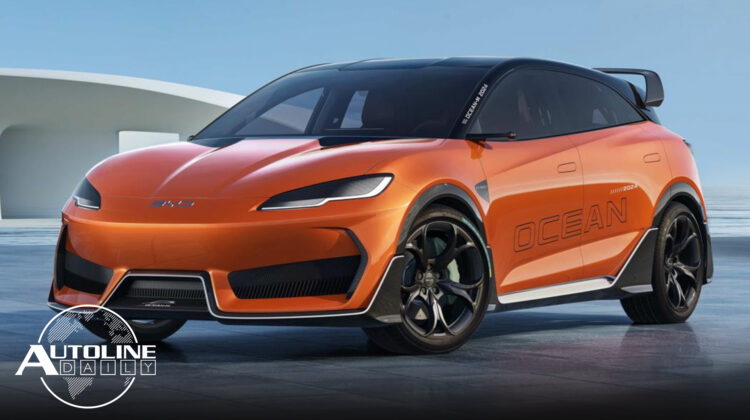
Follow us on social media:
Runtime: 11:41
0:00 Only 3 Chinese Automakers Are Profitable
0:44 CATL Improves LFP Batteries
1:11 CATL Develops EV Platform
1:54 Hyundai Pivots from EVs to Hybrids
2:20 Mercedes Pivots from EVs to Hybrids
2:44 VinFast Burning Through Cash
3:01 Judge Rules In Favor of Supplier, Against Stellantis
4:24 VW Reveals New Styling in ID.CODE Concept
6:45 Toyota Launching New bZ EVs in China Soon
7:45 BYD OCEAN-M is An Electric Hot Hatch
8:11 Hyundai Makes Big Move in India
Visit our sponsor to thank them for their support of Autoline Daily: Bridgestone, Intrepid Control Systems and Teijin Automotive.
This is Autoline Daily, the show dedicated to enthusiasts of the global automotive industry.
ONLY 3 CHINESE EV CO’S ARE PROFITABLE
The Beijing Auto Show is roaring strong, but we’ll get to that a little bit later because there’s some darkening storm clouds gathering over the Chinese auto industry–at least when it comes to electric cars. The Wall Street Journal reports that only three EV makers in China are profitable: BYD, Tesla and Li Auto. And it says that the price war there is only getting started and could go on for the rest of the year. The current level of competition could go on for another two to three years, and potentially only a handful of companies will survive.
CATL LFP BATTERY ADDS 372 MILES IN 10 MINUTES
Even so, China still leads the world in EV development. CATL just introduced a new, more efficient LFP or lithium-iron phosphate battery that has a similar energy density to nickel cobalt manganese batteries. The new battery offers 1,000 kilometers or 621 miles of range and can add 600 kilometers or 372 miles of range in just 10 minutes.
CATL DEVELOPS EV PLATFORM
And CATL, which is already the largest EV battery manufacturer in the world, is expanding beyond batteries. It’s introducing its own EV chassis. The platform integrates the battery, electric drive and thermal management system directly into the platform. It also features brake-by-wire, steer-by-wire, rear-wheel steering, electronically controlled suspension and all-wheel drive. The chassis can support multiple battery chemistries and can be adapted to multiple vehicle sizes. This platform sounds very competitive, and it will be fascinating to see which automakers run to CATL to get it.
HYUNDAI PIVOTS FROM EVs TO HYBRIDS
But the problem with EVs isn’t just in China. Hyundai says global EV sales fell by several thousand units in the first quarter, while sales of hybrids shot up 17% to almost 98,000 vehicles. So it’s going to invest more in hybrids, including making them at its new Georgia assembly plant in the United States ,which originally was only going to make EVs.
MERCEDES PIVOTS FROM EVs TO HYBRIDS
Mercedes-Benz is also going to rely more heavily on ICE and hybrid models in the U.S. Automotive News reports that Mercedes does not expect to sell more EVs and is going to get rid of the current “jelly bean” design and drop the EQ branding for electrics. Future platforms will accommodate a variety of powertrains, just like BMW is doing.
VINFAST BURNING THROUGH CASH
And Vinfast, the Vietnamese automaker, saw sales of its EVs drop 28% quarter-over-quarter, and the founder of the company is investing another billion dollars of his own personal wealth into VinFast because it’s burning through so much cash.
JUDGE RULES IN FAVOR OF SUPPLIER, AGAINST STELLANTIS
Stellantis was just dealt a blow by a judge in the U.S., which could threaten production. The automaker is suing the supplier MacLean-Fogg, which makes gears and pinions for its transmissions, because it’s refusing to ship components to the automaker over a pricing dispute. But a judge just rejected Stellantis’ attempt to force the supplier to resume shipping parts and it must continue paying the supplier if it wants to get the parts. Stellantis argued that this could cause other suppliers that want price increases to withhold shipments, but the judge ruled that this was just “speculation and conjecture.” Earlier this year Stellantis told suppliers it would not accept any more claims from them seeking inflationary cost relief. Two other suppliers, Kamax and Yanfeng, also stopped shipping parts to the automaker this year, which led Stellantis to sue them. But unlike MacLean-Fogg, a judge ruled that Kamax and Yanfeng had to continue shipping parts.
BEIJING AUTO SHOW: VW UNVEILS ID CONCEPT
As I said at the beginning of the show, the Beijing Auto Show is going full bore, and here are some of the highlights so far. Volkswagen’s EVs are adopting a new styling language and it’s previewing the look on the ID.CODE concept. One of the differences includes a new lighting signature, which still stretches across the front and rear of the car, but the light bars are much thicker. The panels also look more tightly pulled over the body, which when combined with the fastback roofline of the ID.CODE, gives the vehicle a very sporty appearance. VW says this concept is a preview of a future large SUV that’s designed to have up to Level 4 autonomous capabilities. But it also plans to launch 30 new models in China by the end of the decade. That includes new ICEs, hybrids, plug-in hybrids with over 100 kilometers or 62 miles of range, BEVs as well as 5 EV models from a brand-new sub-brand called ID.UX. Its first model is the ID.UNYX, which we think is pronounced ‘uniques’ and first showed you in March. It’s basically just a VW version of the Cupra Tavascan, which itself is an MEB-based AWD EV. But it’s hard to know exactly what platform will be used for each vehicle because it has so many. MQB covers anything ICE-based, but for EV it has its current electric platform MEB as well as a new version of MEB, called China Main Platform that instead uses local suppliers for parts and components. At least 4 entry-level vehicles will launch on this platform starting in 2026. In 2027 is when the ID.UX vehicles start launching. It will eventually have 5 models. And they will use MEB, but could also tap into its EV partnership with XPENG or its first China-specific EV platform that is being developed by the Volkswagen China Technology Company. This adds a lot of cost and complexity to Volkswagen’s operations, so it’s going to need these vehicles to sell well for its strategy to pay off.
BEIJING AUTO SHOW: TOYOTA’S EV CONCEPTS
Toyota might be considering dropping its bZ naming structure for EVs, but it’s not giving up on it just yet. It revealed production versions of the bZ Sport Crossover Concept and bZ FlexSpace Concept that it showed off at last year’s Beijing auto show. But now they’re called the bZ3C and bZ3X. Toyota says both models will go on sale within a year from now and include the latest driver assistance tech. The bZ3C was jointly developed with BYD and FAW and is geared towards younger customers, while the bZ3X is more family-oriented and was developed with GAC. That’s about all the details we have for now. But on a wishful thinking note; I feel like there’s a new-age version of the Scion xB hiding in the bZ3X if you gave it a more van-like body with upright side panels.
BEIJING AUTO SHOW: BYD HOT HATCH
Some Europeans are worried about Chinese cars flooding the market and BYD could go after one of Europe’s most coveted vehicle segments, the hot hatch. It revealed the Ocean-M, a rear-drive, all-electric, 4-door hatchback that’s supposed to go on sale in China in the third quarter of this year. Details are few for now, but pricing is expected to be around $25,000.
HYUNDAI MAKES BIG MOVE IN INDIA
Now that it has the largest population in the world, India could be the next huge growth market. That’s why the Hyundai Group is making plans to expand production there. The automaker’s chairman says it will have the capacity to produce 1.5 million vehicles in India next year. The Hyundai brand will account for more than 1 million of those units. And it wants to be one of the leaders in EVs. The Hyundai brand will begin mass producing its first locally built EV in India by the end of the year and it plans to produce 5 EV models by 2030. Kia will start EV production in India next year. In the first quarter of this year, the Hyundai Group sold more than 225,000 vehicles in India, up 1.5% compared to a year ago. And it’s aiming to sell 890,000 this year, which would be a 4% gain.
AAH: UAW & THE TRANSPLANTS
The UAW scored a major victory last week when over 70% of the workers at Volkswagen’s plant in Tennessee voted to join the union. Next up is Mercedes-Benz. And the union promises to go after all the foreign automakers building cars in the U.S., all of which are not unionized. This is a historic development that will have a dramatic impact on the American auto industry. So what’s going to happen? That’s what we’ll be talking about on Autoline After Hours today. We’ve got Merick Masters coming on the show. He’s a labor expert from Wayne State University, who has a deep understanding and great insight into all of this. And we’ve got Mike Martinez, who covers the UAW for Automotive News, and who recently interviewed UAW president Shawn Fain. So join John and Gary when the action gets going on Autoline After Hours.
But that’s a wrap for today. Thanks for tuning in.
Thanks to our partner for embedding Autoline Daily on its website: WardsAuto.com




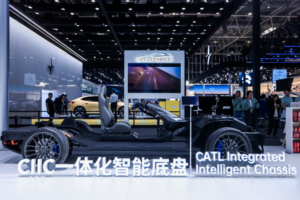

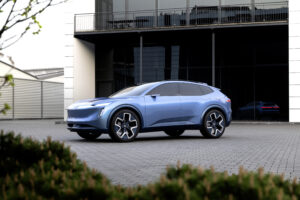
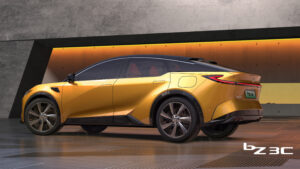
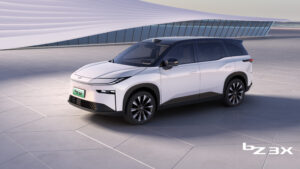
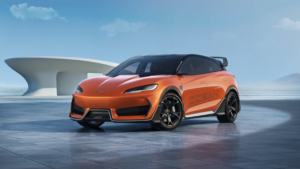

I don’t know what it’s like to work in a non union auto plant, but I did for about 10 years work at an UAW auto plant. I wish the workers at the Volkswagen plant the best, I hope they don’t think having an union is going to make everything better for them, those contracts can be used by the both the union and the company, if your 10 seconds late coming back from a break or lunch you can get wrote up, while that didn’t happen all the time I did see things like that happen. The workers will also see about 3 hours of their pay taken by the union for union dues.
While I would have hated not having an union to keep things somewhat fair, it’s not a paradise because they will have a union now.
Everyone is pivoting from EV to hybrid. Is anyone surprised by this? EVs just seem to be a bit premature. In any industry you lose market share whenever the competition launches something better or cheaper. Better can be anything from more convenient, better looking, longer lasting, better quality. When it comes to EVs they have very few areas where they excel over ICE. People will pay more if a product is better but in the case of EVs you pay more and get less. Hybrids are a good compromise and provide some of the advantages of an ICE while still providing some of the EV features. I’m still not sure why autonomy seems to always be part of EVs It’s like they have a secret marriage.
So I wonder if all these automakers that claimed to not have any future engines in development back in 2019 will now be racing to develop some good hybrid engines.
Lambo,
Blue cruise from Ford and Supercruise from GM is offered on ICE vehicles, typically top tier trims of their most expensive vehicles. But I agree, it seems that everyone introduces them on EVs. I think it is because of the expense and that people paying for EVs likely have expendable cash. They are also typically more tech focused and don’t feel bad burning cash on Level 2 AV tech because, in their view, it is cool which brings value to them. I suspect it is the same reasons for Ford/GM to restrict their level 2 systems to top tier trims. The more value driven consumer would not see any AV tech as a benefit, just an unnecessary expense. The real question is, how big is the non-value driven consumer with expendable cash? That I do not have a clue on. Given that we seem to be at peak EV right now, that is likely the max volume of tech driven people with expendable cash though.
Lambo,
Plug in Hybrids always made the most sense for the US consumer whom frequently drives long distances. Maybe in Europe where it is more common to stay within a given city it makes more sense to be BEV, if they have a place to charge them. The only reason PHEV sales have been weak is that the pure EV mode range has been very low given the cost increase. But EVs cars did one thing, and that is reduce the cost of the tech that plug in hybrids use while simultaneously increasing the range in pure EV mode. BEVs also made the consumer rethink their value equation and calculate more long term than short term price only which favors a PHEV. So the BEV push oddly made PHEV a much more viable option for most consumers. Never would have seen that coming but the law of unintended consequences surely did.
From the driver’s standpoint, non plug-in hybrids, like I have, are just ICE cars that get very good gas mileage. There are some hybrids that are designed more for performance than efficiency, but most Toyota hybrids, most Hyundai hybrids, Ford Maverick hybrid and a few others are mainly about efficiency.
Plug-in hybrids can make sense for some people, those with home charging and relatively short commutes. Some, like Prius Prime get very good mpg, even if never plugged in, but others, like Jeep 4xe have no mpg advantage if not plugged in, but save money if plugged in, and perform well. Because of the battery size, most plug-in hybrids cost substantially more than other versions of the same vehicle.
The main thing increasing the EV range of plug-in hybrids is bigger batteries, not “new technology.”
It amuses me how one day this blog runs all the propaganda stories about the fabulous gains in EV technology and soaring year over year sales. And then very soon after have to report that well actually all the automakers are losing billions on them, plants are idled, rollouts delayed by years or just cancelled, ICE development is back, and all the government mandated deadlines are having to be quietly rolled back. And now even Tesla is slashing prices and the other OEMs are desperately pivoting to the hybrid lifeboat. Must be hard dealing with that whiplash and it certainly doesn’t help the credibility.
There’s also a nice article up over on autoblog about how UPS and FEDEX can’t even find providers of EV delivery vans because all four major players in that space are in either active or pending bankruptcy. Brings a smile to the DailyDriver’s face.
The superficially contradictory stories stem from a lack of context. You get that with the passage of time, and by casting a wider net, say by listening to AAH.
Tesla’s margins are still the stuff of dreams for legacy car companies (gross margin: 17.4% vs. 19.3% y/y). And the company’s mission is to hasten the advent of sustainable transportation – successively lowering barriers of entry used to be an essential part of that, before Elon was bitten by the AI bug (which isn’t inherently negative).
While as of last October, Amazon had 10K Rivian delivery vans on the road.
With a BYD Seagull starting at under 10K USD in China, and sporting 30.08 kWh LFP or 38.88 kWh LFP BYD Blade batteries (source Wiki), it’s clear where electrification is going. What matters here is the clear upper bound to the cost of the battery, of course.
In related news, just heard right now that in Q1 ’24 (almost a quarter-century in, my oh my), renewables contributed 56% to German electricity output. That’s in Europe’s biggest, and heavily industrial economy, in winter.
The lack of a long-term perspective can twist daily or even yearly changes out of all proportion. Automotive electrification is a process lasting a (human) generation, and seriously started maybe 10 years ago. How far it will go isn’t completely obvious right now either, but it’s a moving target.
In my opinion we are on the brink of a major shift in the auto industry. I’m no fortune teller, but I don’t think we have been looking at electrification properly. I think there is enormous potential there, but it seems we are trying to force it into a box where it doesn’t belong. Someone will find the proper solution, but it just seems to me that EVs are a great inner-city vehicle. They make great sense for commercial vehicles that have daily mileage in range and sit idle for half the day. The technology has opened the door for electrifying lots of other products from lawn equipment to energy storage. I’m just not sold on its use as a ICE replacement in rural parts of any country. Which is why I think PHEVs can help fill the gap until a better battery is developed. My other concern is a better battery will be developed and make public charging stations obsolete. Someone will figure out a better way to charge EVs and maybe its battery swapping or inductive charging, but likely something we haven’t even figured out yet. But I’d almost bet about the time we have spent a bunch of money and time developing a charging network we won’t need plugs and cords and those stations will disappear like public phone booths. I certainly don’t know what the solution is, but I just have a feeling EVs will find a use that makes more sense than how we are currently trying to apply them. One thing I do know is this is not as good as it gets so I do look forward to future battery developments and where that will take us.
EVs, as they now exist, can work well as commuter cars for tens of millions of Americans in multi-vehicle households with home charging available. Many of them could get by with only level one charging.
Hertz buying EV’s is hurting.. Its noon so I’ll post on todays show if Sean doesnt mention it.
https://www.msn.com/en-us/money/companies/hertz-is-done-gambling-with-evs-it-took-a-first-quarter-195-million-hit-on-teslas-that-just-keep-losing-value-and-can-t-sell-them-fast-enough/ar-AA1nFQCL?ocid=hpmsn&cvid=48af624eff4c4ab49ba6eae50a3dbfca&ei=74